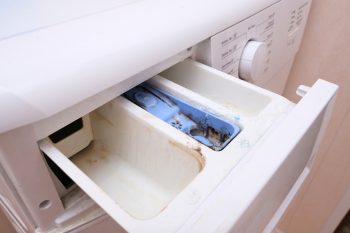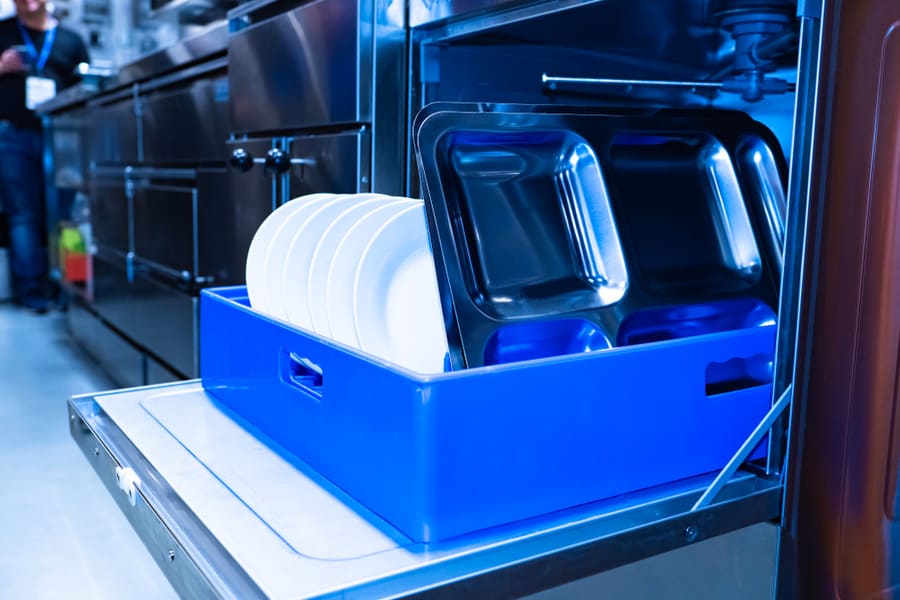
Placing dishes in a dirty dishwasher might seem counterintuitive, and it is. Food particles, residue, and grease can build up inside your dishwasher.
This means that any plates, pots, and utensils you try to clean will remain covered in microbes. And if you’re in the food business, that’s unacceptable.
Cleaning and descaling a commercial dishwasher should have a fixed place in your routine maintenance schedule. In doing so, you maintain its proper functioning, spend less on detergents, and guarantee clean dishes for all your customers.
But how exactly should you clean and descale your dishwasher?
- Read the manual before you start.
- Remove and rinse any parts that you can take apart from the main assembly.
- Use mild detergent and warm water for the whole process.
- Don’t forget to air dry whenever possible.
- Choose an approved descaling solution when targeting limescale build-up.
A commercial dishwasher is an expensive piece of equipment. Before you start cleaning, read through the instructions to see if your dishwasher’s manufacturer has any specific cleaning guidelines you need to follow. Doing so will protect your warranty.
If your manufacturer doesn’t provide unique cleaning and descaling techniques, you can try these steps.
5 Steps to Cleaning a Commercial Dishwasher
1. Take Out Removable Parts
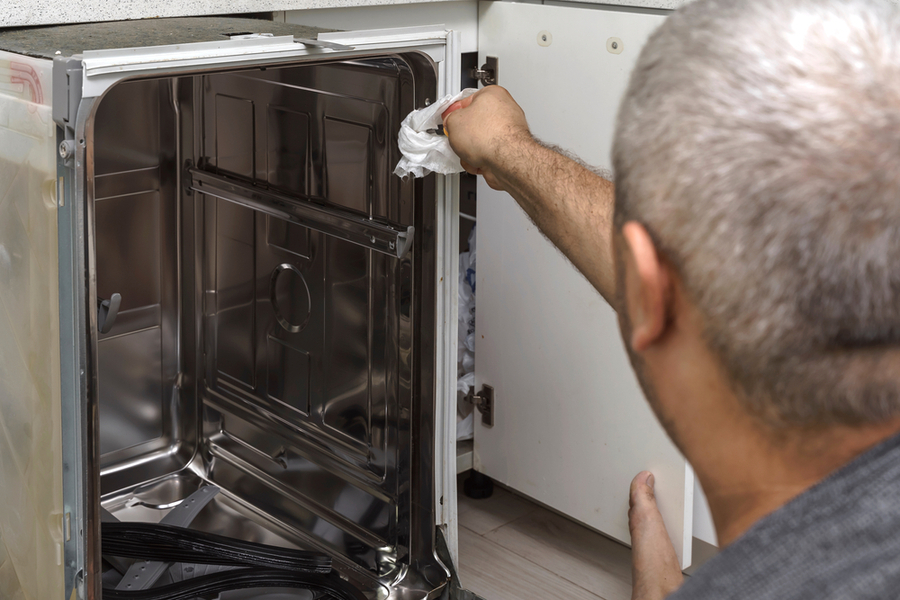
Some commercial dishwashers are designed so that you can remove certain internal parts. This makes it possible to perform a more thorough cleaning.
If it’s your first time cleaning your commercial dishwasher, take pictures of it while assembled so you can recall where each part goes when you’re done with the process.
Carefully remove removable parts and wash them with warm water and mild detergent. You can use the same cleaning solution when running a dishwashing cycle to prevent damage to the machine’s parts.
If your dishwasher has removable arms and jets, take the opportunity to inspect the holes for clogs. Built-up food particles and grime can obstruct water flow and reduce the machine’s cleaning power.
Take a soft bristle brush to work away any accumulated filth and clear up the holes. Set the parts aside to drip dry on a clean towel or rag.
2. Wash the Main Chamber
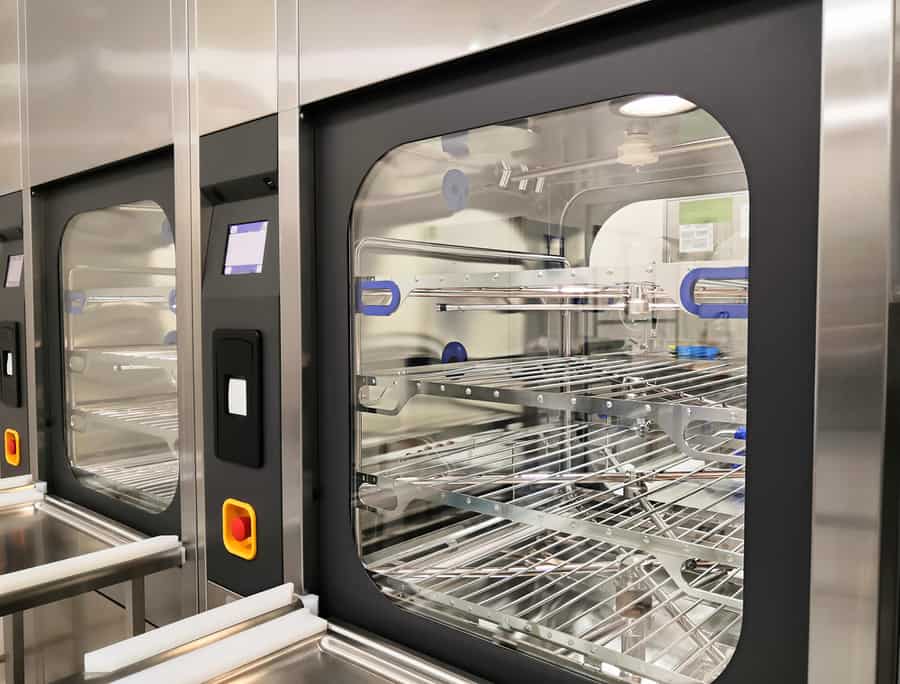
You can start cleaning the main chamber with all the removable parts out of the way. You can use the machine’s spray nozzle to do this step.
For more intensive cleaning, take a damp microfiber towel, apply a small amount of mild detergent, and wipe all of the dishwasher’s surfaces.
Once you’re done, you can drain and empty the tank. Leave the machine open to allow any residual moisture to evaporate.
3. Clean Out the Nozzle Holes
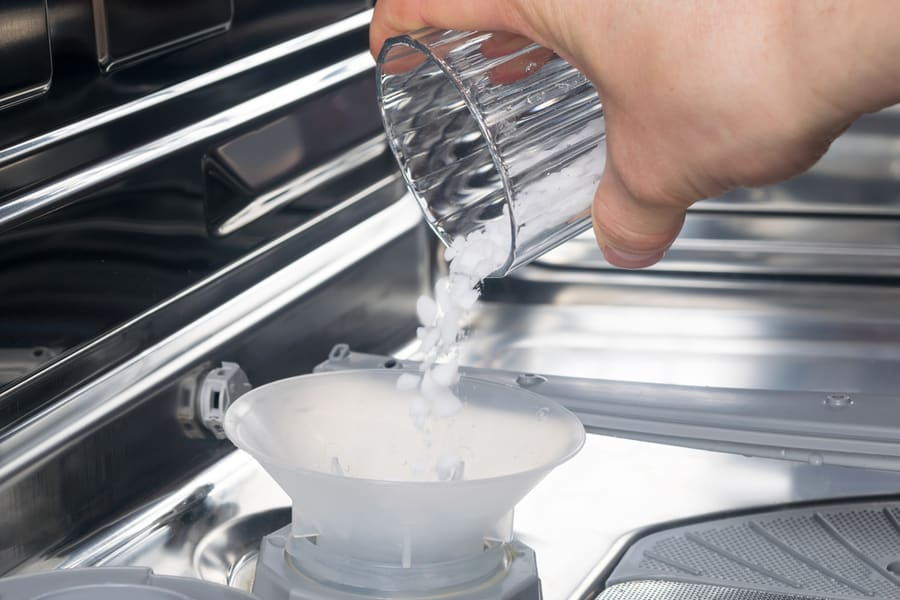
Inspect your spray nozzles for any built-up grime. Because these nozzles are almost always wet, they may be prone to black mold growth, which may appear as black spots.
To get rid of the mold, wash the spray nozzles with a mixture of vinegar and water in equal parts.
It’s not recommended that you soak the spray nozzle head in the solution. Instead, take a clean microfiber rag soaked in your vinegar and water solution and gently wipe away the black spots.
Make sure to dry the nozzle when you’re done.
4. Rinse the Filters
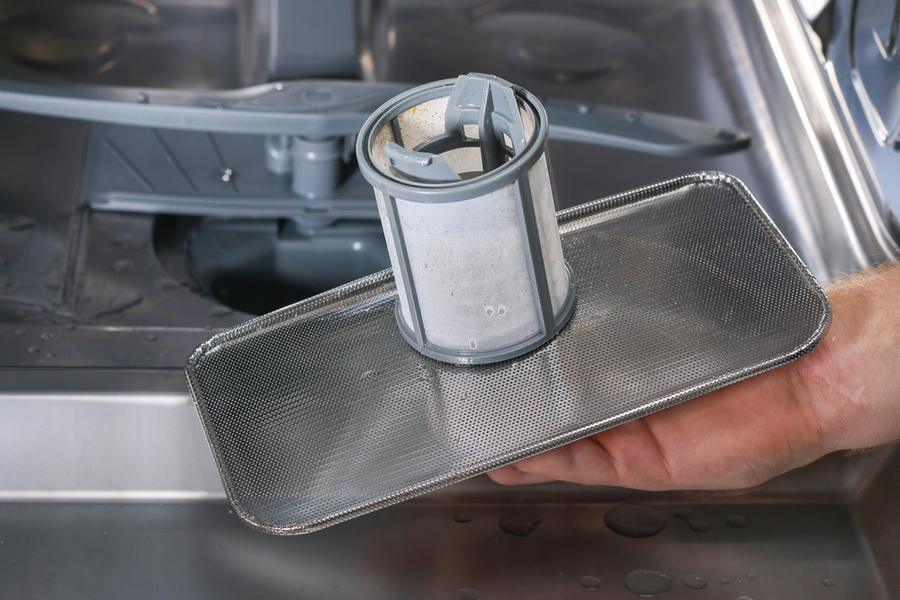
A commercial dishwasher uses filters to trap any food residue that might be left on your plates. These filters may become significantly blocked by particles over time.
So it’s important to rinse and soap them routinely to make sure plates come out clean and free from contamination.
It’s best to use your hands for filter cleaning because it allows you to feel the filter for grease and grime. Use detergent soap and a rag to wash and wipe the filter after you remove any residue.
You can also use a soft bristle brush to scrub the filter for a more thorough cleaning.
5. Clean or Replace Feed Tubes

The feed tubes are narrow, transparent plastic tubes that feed the detergent and rinse aid into the chamber during a wash cycle. Sometimes, these tubes may become clogged with detergent solution.
Inspect the tubes to make sure they’re still in good working condition. Otherwise, it might be time for a replacement.
If the tubes are in proper order, you can fill up the detergent and rinse aid compartments to prepare the dishwasher for its next cleaning cycle.
How To Descale a Commercial Dishwasher

If you feed your commercial dishwasher hard water rich in minerals, you might find a white chalky substance building up in various parts of the machine. This is called Limescale and may prevent your dishwasher from performing properly and efficiently.
When there are too much of mineral deposits lining the different parts of your dishwasher, you might find that you need more detergent to achieve a thorough cleaning.
To get rid of the limescale build-up, you will have to descale your dishwasher preferably after you’ve cleaned it by following the five steps listed above.
Here’s how to descale your dishwasher:
- Fill up the tank with water as you would before a dishwashing cycle.
- Use a descaling product of your choice and add an amount as indicated in the product directions.
- Leave the descaling solution in the dishwasher for at least an hour or as directed.
- Turn on the dishwasher and run a cleaning cycle.
- Check for residual limescale.
- If you can still see the chalky deposits, repeat steps two to four until the deposits are gone.
- Once thoroughly descaled, run an empty wash cycle using standard detergent to remove residual product.
Store-bought descaling solutions often use harmful chemicals on the skin and eyes. Use proper protective gear like safety glasses and gloves when handling the solution.
It’s also important to ensure you thoroughly rinse the product out of the machine before washing a batch of dishes to prevent contamination.
Summary
Proper cleaning and descaling are necessary to guarantee that your dishwasher performs its job efficiently. Removing food residue in the machine ensures that any dishes you wash with it are free from microbes and harmful bacteria.
Eliminating limescale, on the other hand, prevents damage to your machine and guarantees that it’s in proper working condition.
When was the last time you cleaned your commercial dishwasher? Follow these steps to get the job done safely, easily, and effectively.
Frequently Asked Questions
How Often Should You Clean and Descale a Commercial Dishwasher?
Most manufacturers agree that commercial dishwashers should be thoroughly cleaned daily. On the other hand, descaling should occur at least once a week.
In some cases, manufacturers will require that you follow these strict schedules to keep your warranty intact. So make sure to read the manual for your machine.
Can You Use Vinegar and Baking Soda To Clean a Commercial Dishwasher?
In theory, you should be able to clean a commercial dishwasher with vinegar and baking soda. These two kitchen staples have often been crowned as some of the best natural cleaning products on the block.
But because some manufacturers require specific cleaning solutions for their machines, it’s important that you check the manual before you resort to vinegar and baking soda.




